Nothing brings me more joy than showering my furry friend with love and care. Recently, while I was enjoying a delicious bowl of fresh strawberries, my curious little friend sat nearby, gazing at the juicy red fruits with his soulful eyes. At that moment, a question popped into my mind: “Can dogs eat them as well?”
Although it was extremely hard to ignore those sweet puppy eyes, I knew it was essential to check first if this treat could be safely shared with my pup. Delving into the research, I discovered a wealth of information about dogs and strawberries.
I realized that many fellow puppy owners might be pondering the same question. So, I decided to explore this topic further to ensure that my puppy’s diet remained both delightful and safe.
Are they Safe?
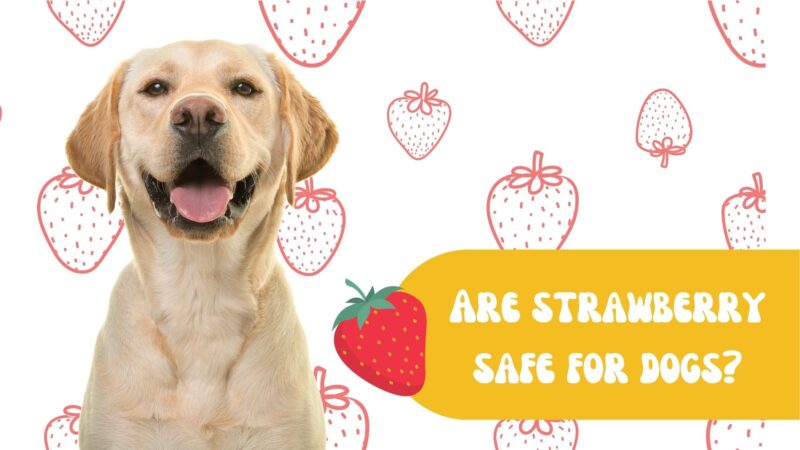
The short answer is yes, dogs can eat strawberries. However, like with any other food, they should be given in moderation. They are not toxic to dogs, but they do contain sugar, which can be harmful in large amounts. It’s also important to note that while these are safe for most dogs, every pet is unique and may react differently to different foods.
Therefore, it’s always a good idea to introduce new foods slowly and monitor your pet’s reaction. While strawberries are safe for dogs, not all fruits are. Some fruits, like grapes and raisins, are toxic to puppies and can cause serious health problems.
Therefore, it’s always important to do your research before introducing new fruits into your pet’s diet. When in doubt, consult with your vet.
Nutritional Value
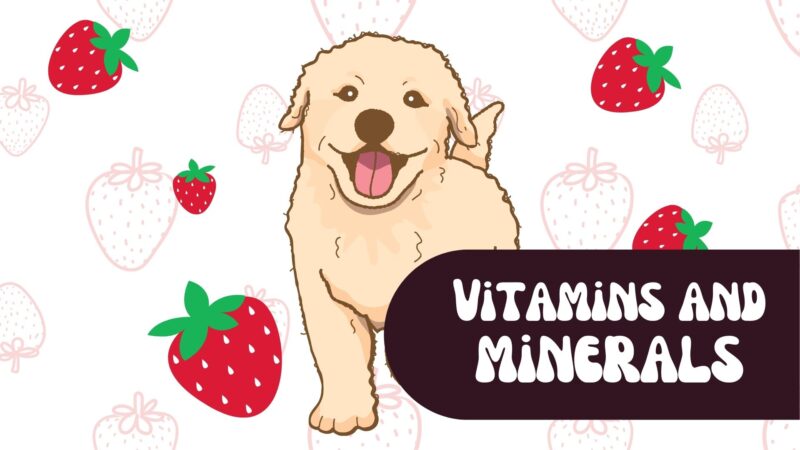
Strawberries are packed with vitamins and minerals that can be beneficial for your pet’s health. They are a great source of vitamin C, which can help boost their immune system. They also contain an enzyme that can help whiten their teeth.
In addition to vitamin C, this fruit also contains other important nutrients like fiber, potassium, and magnesium. Fiber is important for your pet’s digestive health, while potassium and magnesium are essential for heart health. They also contain antioxidants, which can help protect their cells from damage.
Dogs and Strawberries: Canines’ Dietary Needs

Dogs are natural omnivores, meaning they eat both meat and plant-based foods. Their diet should be balanced and varied, providing all the necessary nutrients they need to stay healthy. While meat should be the main component of their diet, fruits and vegetables can also provide essential vitamins and minerals.
As omnivores, dogs have the ability to digest a variety of foods, including both meat and plants. This is a trait they share with humans. However, while humans can thrive on a plant-based diet, they cannot. Canines need a diet high in protein, which is best provided by meat.
While fruits and vegetables can provide some nutrients, they cannot provide all the nutrients they need. Therefore, while it’s okay to give your pet strawberries and other fruits and vegetables as a treat, these foods should not make up the bulk of your pet’s diet.
Always make sure your pet is getting plenty of meat and other protein-rich foods. And always consult with your vet before making any major changes to their diet.
Potential Benefits
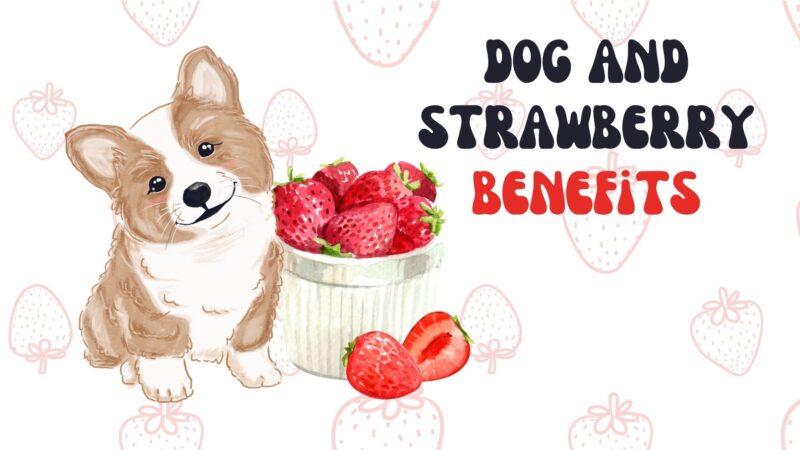
In addition to their nutritional value, strawberries can also provide other benefits for dogs. For example, the enzymes in them can help whiten your pet’s teeth, and the high water content can help keep them hydrated. Plus, their sweet taste can make for a delicious treat.
The enzymes in strawberries can help break down plaque on your dog’s teeth, leading to whiter teeth and fresher breath. However, it’s important to note that strawberries are not a substitute for regular dental care. You should still brush your pet’s teeth regularly and provide them with dental chews, foods or dental products.
The high water content can also be beneficial for dogs, especially during the hot summer months. Giving your pet this fruit can help keep them hydrated, which is important for their overall health. However, water should always be the main source of hydration for your puppy.
While strawberries can help, they should not replace regular water intake. Finally, strawberries are a low-calorie treat that many dogs enjoy. They can be a great alternative to high-calorie treats that can lead to weight gain.
Potential Risks
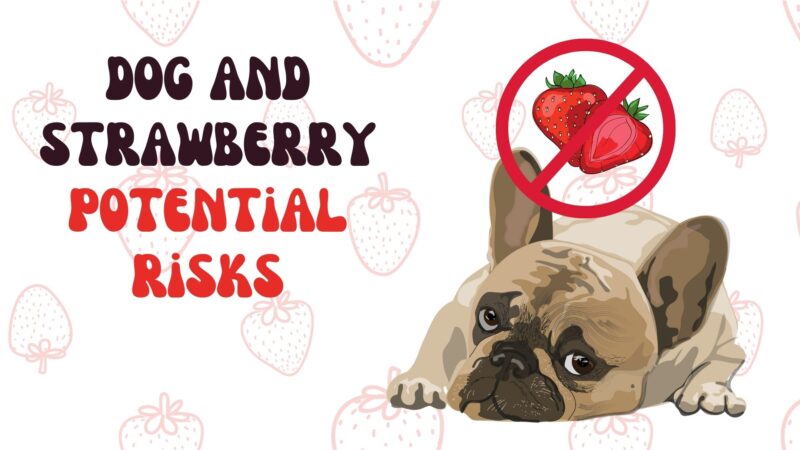
Allergic Reactions
Although allergic reactions to strawberries are relatively rare in dogs some dogs may be allergic to this fruit. Signs of an allergic reaction can include itching, hives, swelling, difficulty breathing, and other symptoms. If you notice any of these symptoms after your pet eats strawberries, contact your vet immediately.
Allergies in dogs can be serious and should always be taken seriously. If your puppy has an allergic reaction to this treat, they should not be given the fruit again. Your vet can provide you with alternative fruits or treats that are safe for your pet to eat.
Digestive Issues
As we’ve mentioned, this fruit is high in fiber, which is generally good for your pet’s digestive system. However, if your puppy is not used to eating strawberries, they may experience some digestive upset. This can include symptoms like diarrhea or stomach ache.
If your pet experiences digestive upset after eating, it may be a sign that they are eating too many. In this case, you should reduce the amount of strawberries you are giving your puppy. If the digestive upset continues, you should stop giving your dog strawberries and consult with your vet.
Some puppies may have more sensitive stomachs than others and may not be able to handle strawberries. Always monitor your pet’s reaction to new foods and consult with your vet if you have any concerns.
Sugar Content: Moderation is Key
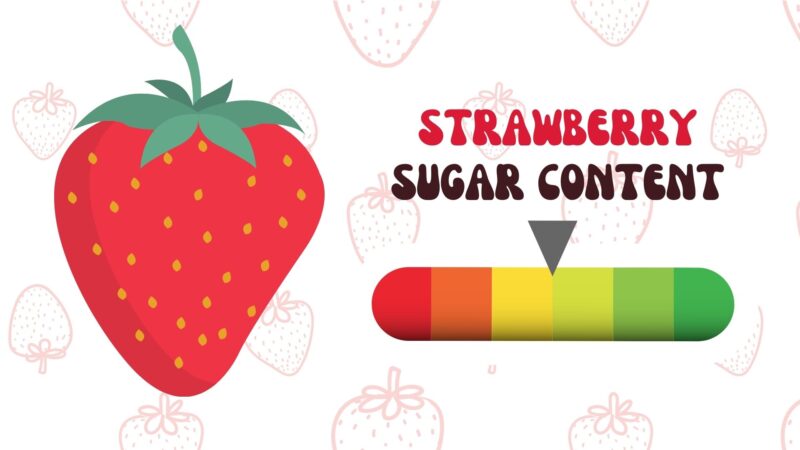
While strawberries are a healthy treat, they do contain sugar. Too much sugar can lead to obesity and other health problems in dogs. Therefore, these should be given in moderation. Although the sugar in fruits is natural sugar, it can still be harmful to puppies if consumed in large amounts.
Too much sugar can lead to weight gain, which can increase your pet’s risk of developing health problems like diabetes and heart disease. Therefore, these should be given as an occasional treat, not as a regular part of your dog’s diet.
Preparing Strawberries
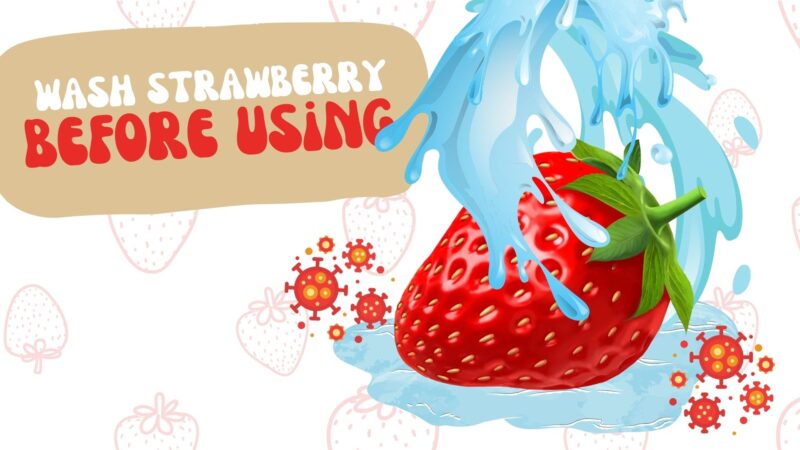
Make sure to wash the fruit thoroughly to remove any pesticides or other harmful substances. Once again, never give your pet the leaves or stem of the strawberry, as these parts can be harmful. When washing strawberries, it’s best to use cold water.
This can help remove any dirt or bacteria on the surface. You can also use a vegetable brush to gently scrub them and remove any stubborn dirt or debris. You should also cut the fruit into small pieces that are easy for your dog to chew and swallow. This can help prevent choking and make the strawberries easier for your dog to digest.
Removing Seeds and Stems
While the seeds in strawberries are not harmful to dogs, they can be hard to digest and may cause stomach upset. Therefore, it’s best to remove them before giving your pet the fruit. When removing the seeds, you can use a knife or a strawberry huller.
It is a tool that is specifically designed to remove the seeds from strawberries. It’s easy to use and can make the process of preparing the fruit for your pet much easier. You can also use it to remove the stems from strawberries. Simply cut off the top of the strawberry where the stem is attached.
Be sure to remove all of the stem, as even small pieces can be a choking hazard.
Serving Size and Frequency
When determining the serving size for your dog, it’s important to consider their size and weight. Larger canines can handle larger servings, while the smaller ones should be given smaller servings. A good rule of thumb is to give your pet one strawberry for every ten pounds of their weight.
It’s also best to limit the fruit to an occasional treat, rather than a regular part of your dog’s diet.
Gradual Incorporation: How to Introduce New Foods

Introducing new foods should always be done gradually. Start by giving your pet a small amount of strawberries and monitor their reaction. This can be as little as one or two small pieces of strawberry.
If they seem to enjoy the strawberries and do not show any signs of digestive upset or allergic reaction, you can gradually increase the amount. If you introduce new foods too quickly, your pet’s digestive system may not have time to adjust, which can lead to stomach upset or other digestive problems.
Mixing with Regular Food
One way to incorporate this fruit into your pet’s diet is by mixing the delectable cinnamon treats with their regular food. Imagine the delightful aroma of these treats wafting through the air as you gently blend them into your furry friend’s meal. This simple yet effective method not only enhances the flavor profile but also adds an element of excitement to mealtime for your puppy. Beyond the irresistible taste, this approach serves another purpose – ensuring that your beloved companion is nourished with a well-balanced diet. So, as you sprinkle these enticing cinnamon treats over their food, you’re not just tantalizing their taste buds; you’re also nurturing their health and happiness.
Alternatives to Fresh Strawberries

Frozen Strawberries
If your dog enjoys the taste of this fruit, you might consider giving them frozen strawberries as a treat. These can be a refreshing treat on a hot day, and they can also help soothe teething puppies. To prepare them for your pet, simply wash and cut the strawberries as you would for fresh strawberries.
Then, place them in a freezer-safe bag or container and freeze them. Once they are frozen, you can give them to your pet as a treat.
Dehydrated Strawberries
Another alternative to fresh strawberries is dehydrated strawberries. These are a crunchy treat that many dogs enjoy. However, keep in mind that they can be higher in sugar than fresh strawberries, so they should be given in moderation.
To prepare these, simply wash and cut the strawberries as you would for fresh strawberries. Then, place them in a dehydrator and dehydrate them according to the manufacturer’s instructions. Once they are dehydrated, you can give them to your pet as a treat.
Store-Bought Options
There are also many store-bought dog treats that are strawberry-flavored. These can be a good option if your dog enjoys the taste of this fruit but you don’t want to prepare fresh strawberries. However, always check the ingredients to make sure the treats are healthy and safe for your pet.
When choosing these treats, look for the ones that are made with real strawberries. Avoid treats that are made with artificial flavors or colors, as these can be harmful to your puppy. Also, check the sugar content of the treats. While strawberries are naturally sweet, some strawberry-flavored treats may contain added sugar, which can be harmful to your pet.
Other Fruits Safe for Dogs
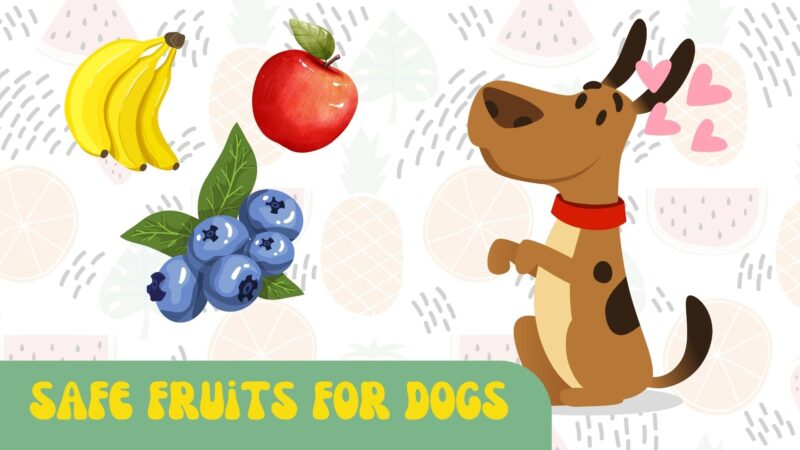
In addition to strawberries, there are many other fruits that are safe for dogs to eat. These include apples, bananas, blueberries, avocados and more. Each of these fruits provides different nutritional benefits, so it can be beneficial to include a variety of fruits in your pet’s diet.
Nutritional Benefits of Different Fruits
Different fruits provide different nutritional benefits. For example, apples are a good source of fiber and vitamin A, while bananas are high in potassium. Blueberries are packed with antioxidants, which can help protect your dog’s cells from damage.
When choosing fruits for your pet, it’s important to consider their nutritional needs. While fruits can provide some nutrients, they cannot provide all the nutrients your dog needs. It’s also important to prepare fruits properly before giving them to your puppy.
Always wash fruits thoroughly to remove any pesticides or other harmful substances. Also, cut the fruits into small pieces to prevent choking. And always remove any seeds or pits.
By introducing a variety of fruits into your dog’s diet, you can help ensure they are getting a wide range of nutrients. Plus, trying new fruits can be a fun and exciting experience for your dog. It’s also a good idea to rotate the fruits you give your dog.
This can help ensure they are getting a variety of nutrients and can also prevent them from getting bored with their diet. Always consult with your vet before introducing new fruits into your dog’s diet.
FAQs:
Can dogs eat wild strawberries from the yard?
It’s best to avoid letting your pet eat wild strawberries, as they might have been exposed to pesticides or other chemicals.
Is it safe for them to eat strawberry ice cream?
No, avoid giving your puppy ice cream or any dairy products, as many of them are lactose intolerant.
Can these be used as a training treat?
Yes, this fruit can be a healthy alternative to traditional training treats. Just ensure to cut them into tiny pieces.
Is it safe to give your puppy strawberry jam or preserves?
No, avoid giving these to your pet, as they contain added sugars and preservatives.
Can puppies with kidney issues eat this fruit?
Strawberries are high in oxalates, so it’s best to consult your vet before giving them to a dog with kidney problems.
Conclusion
To sum up, yes, dogs can eat strawberries. They are a healthy treat that can provide many nutritional benefits. However, like with any food, they should be given in moderation. Always prepare them properly by washing and cutting them, and monitor your dog for any adverse reactions.
When deciding whether to include this fruit in your pet’s diet, it’s important to consider their overall health and dietary needs. As a pet owner, your main goal is to keep your furry friend safe and healthy. This includes providing a balanced diet, regular exercise, and regular vet check-ups.
By doing so, we can help ensure our pets live a long, happy, and healthy life. And what could be more rewarding than that?!
If you’re interested what does dog dream about, you can read it in this article !







